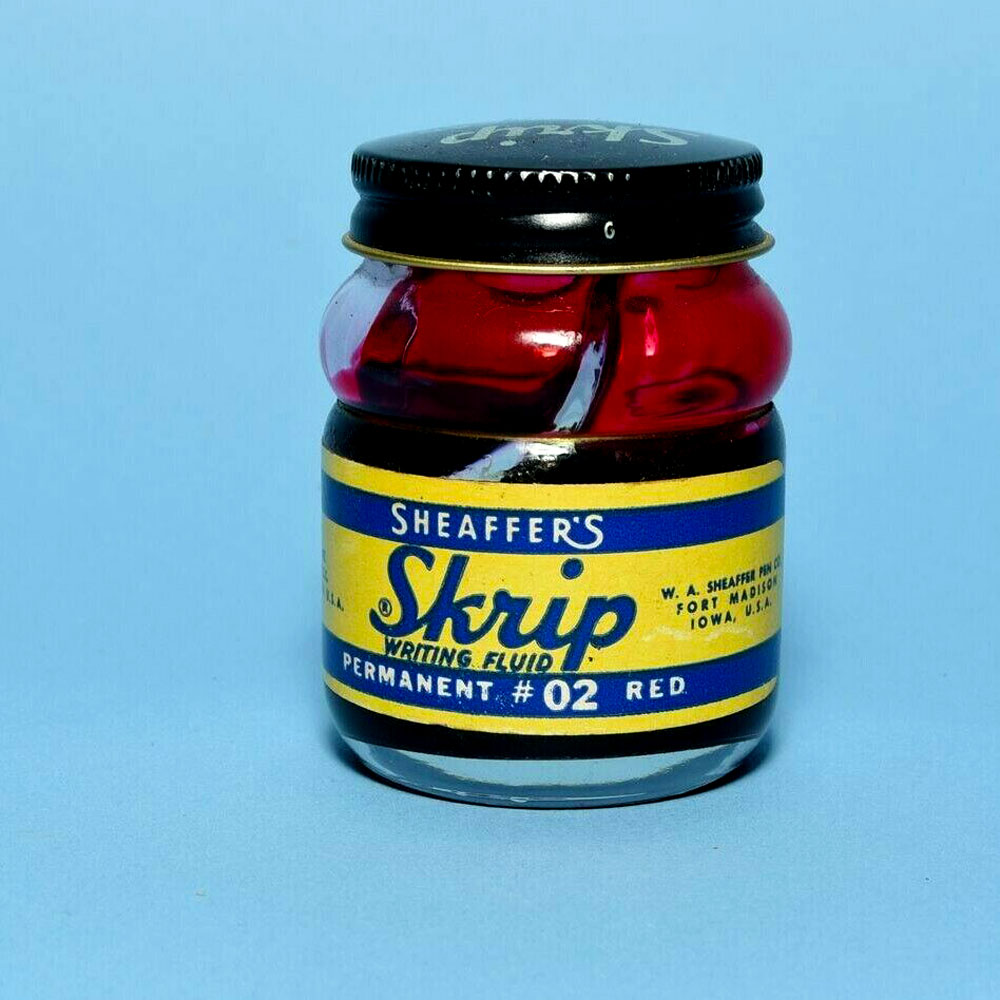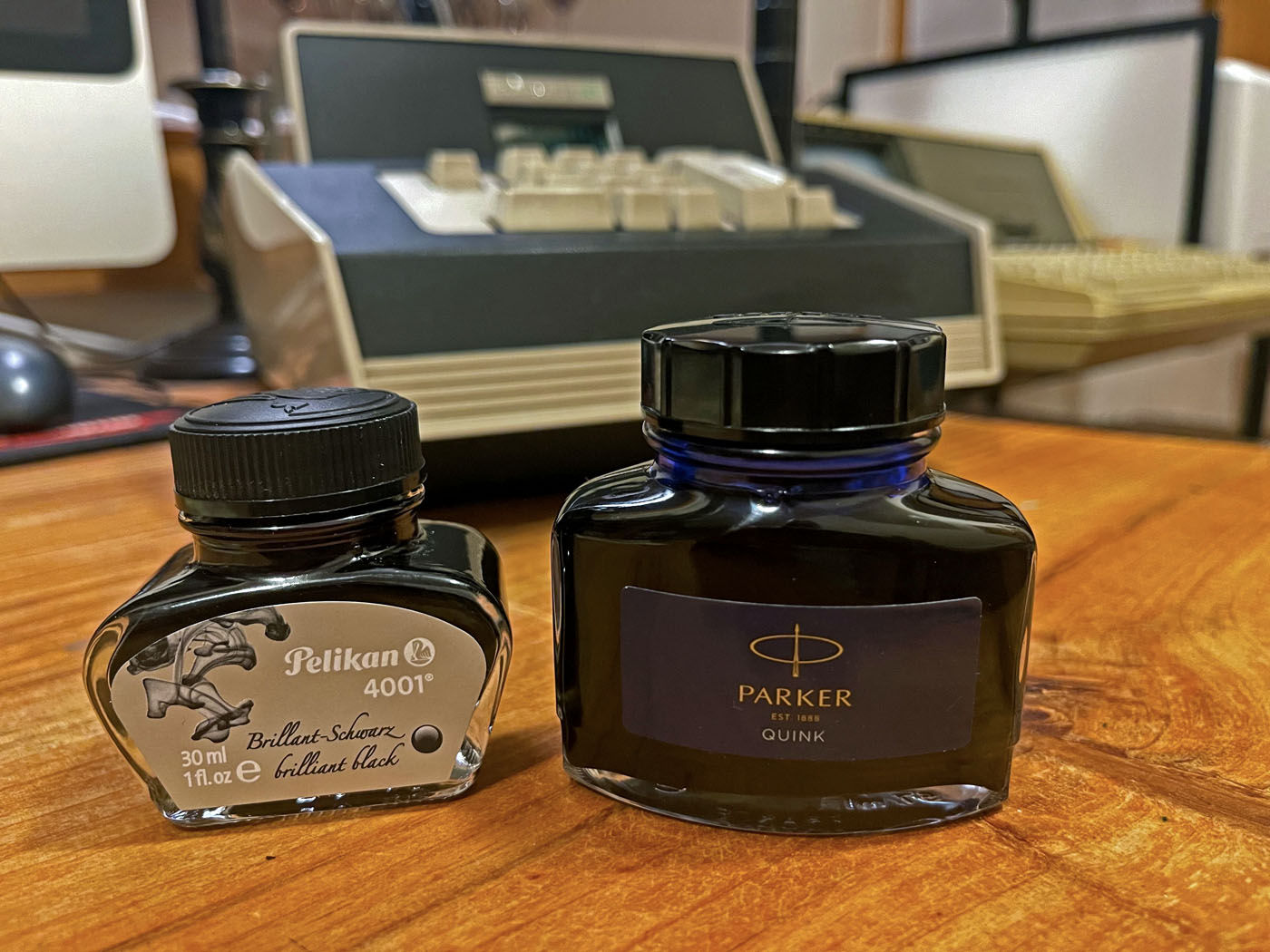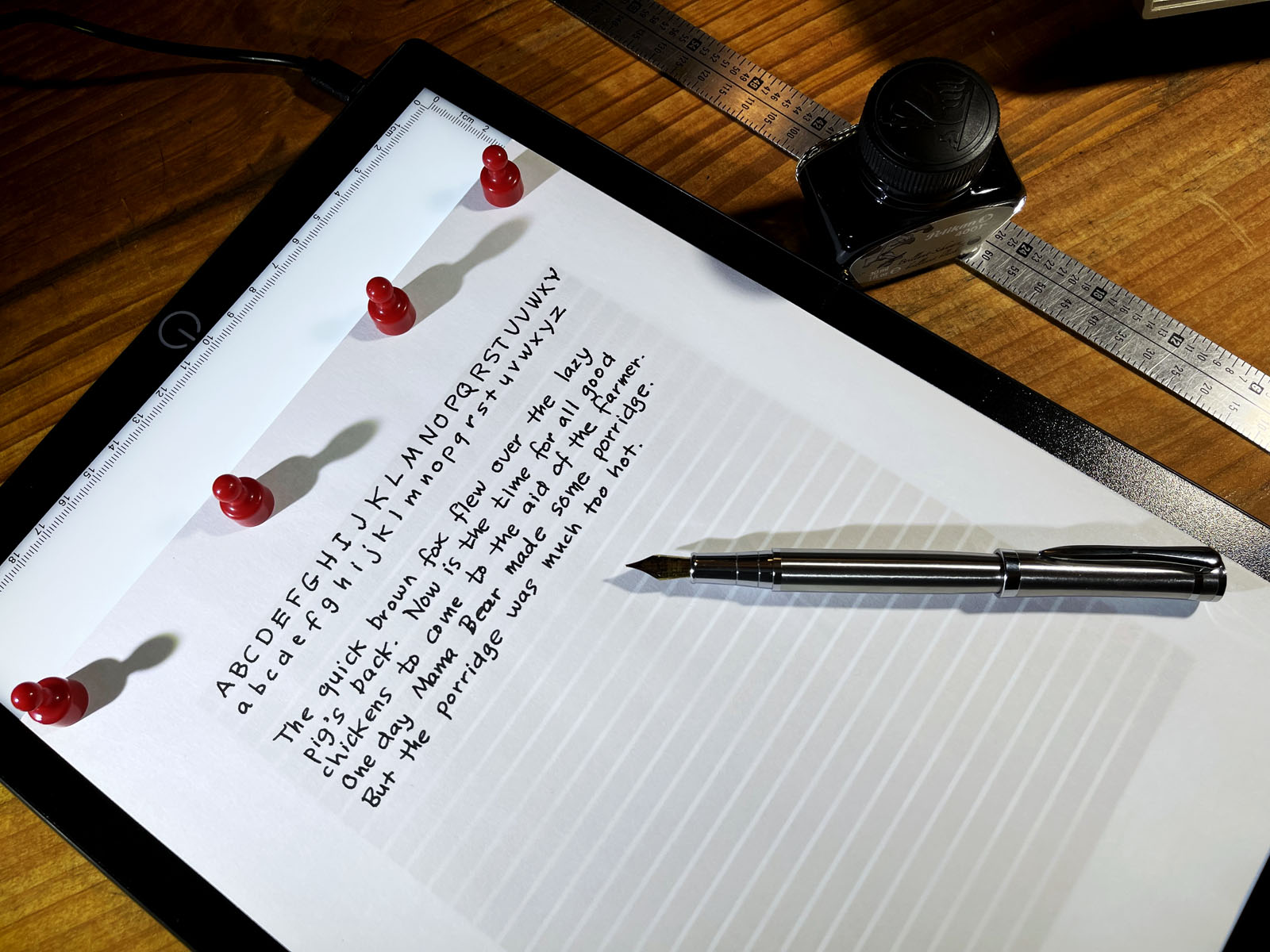
How many types of ink do you have in your house? I’m guessing that modern households are likely to have no more than two types: ballpoint or felt-tip pens with ink inside, and maybe an inkjet printer. Ink stains on our fingers are a thing of the past. That’s a bit sad.
When I think back about it, and though I greatly love computers, I am ashamed of how long it took me to realize just how much we lost when computers pushed the ink out of our lives. It was the recent revival of my love of typewriters that started me thinking about ink. Typewriter ribbons, of course, are saturated with ink. Change the typewriter’s ribbon and you’ll get ink on your hands.
But it was a slippery slope. As I started typing letters on typewriters as a kind of retro exercise (letters to send to friends who have typewriters or friends who I hope will acquire a typewriter), it became obvious that typewritten letters need to be signed. Then it became equally obvious, because I was born with ink in my veins, that the only way to properly sign a typewritten letter is with a fountain pen. I had not owned a fountain pen in many years. If you buy a fountain pen (I bought two), then you will surely buy some ink as well. And before you know it, you will frequently have ink on your fingers, just like our ancestors.
Though you can’t buy ink at Woolworth’s anymore, there are many types of ink available on Amazon. Lots of weird people still use lots of ink — artists, for example.

According to Wikipedia, human beings have been using ink for as long as 4,000 years (in China). The decline in the use of ink for personal communications started, of course, in the 1980s, as computers became increasingly common. How did we ever live without email and texting? And yet, let us be ever so grateful that our postal services are still with us. They’d still be very happy to transport a letter for you. My letters to Scotland arrive in about six days, and, to France, eight days. That, I believe, is faster than 40 years ago. Wouldn’t it be nice to occasionally find a real letter in your mailbox? But, of course, to get some letters you have to write some letters. Typed or handwritten are equally good.

Soon some friend of mine will receive a letter from me written with pen and ink. Have I ever even done that before? After the age of eleven, when I got my first typewriter, I typed everything. But first I need some practice with pen and ink. Many years ago I had a very legible cursive. I’ve completely lost that. But I can still print pretty well. Fountain pens want to move more slowly than ballpoint pens anyway, so printing is not excessively slow (even though I can type ten times faster).
As I reflected on these things, I recovered a memory of the only honor society I got into in high school. That was Quill and Scroll. To my surprise, it still exists. How my pin survived all these years I have no idea. It must have meant something to me. It turned out that journalism and newspapers were my career. And once again there is ink on my fingers as well as ink in my blood.


Ah, the joys of fountain pens!
Yes, I still have three fountain pens that work, one my father gave me when I graduated from college. And a bottle of Pelikan ink, and a bottle of Schaeffer’s Black Skrip Writing Fluid, complete with inkwell en suite.
I still have the callus on the left side of my right middle finger, once always stained with black ink, now mainly on ceremonial occasions. And yes, my cursive has declined precipitously, though when I write a letter by hand with my Schaeffer fountain pen, it’s pretty legible by the time I get to the signature.
Oh yes, I’m 73 and going strong.
By the way, thanks for the image of the pica pole snuggled under the ink bottle. Memories of night editing for the local daily, and rip-and-read teletype radio news feeds.
Hi Michael: I had forgotten about the callus on the middle finger! And thank you for noticing the pica pole. It is one of my most treasured possessions. It followed me from the Winston-Salem Journal to the San Francisco Examiner to the San Francisco Chronicle. It’s always on my desk, and I use it all the time. You and I are about the same age. It was a heck of a time to work for newspapers — starting in the days of hot-lead Linotypes and rooms full of Teletypes and ending with only two American newspapers still standing — the New York Times and the Washington Post.
When I was at primary school in the late 1980s we still had the old Victorian school desks. There was a built in inkwell which past generations would have filled with ink to write with. Those desks must have been over 100 years old and still going strong. You could lift up the top and store books inside, marvellous things.
Hi Chenda: Amazing… Though it is fantastic that children learned to use ink so young, I can’t help but wonder what kind of stains and messes they must have created. 🙂
Wonderful article, thank you
When I was a boy in San Francisco (1940’s), we attended Sacred Heart Elementary. I recall sister Boynton walking amongst us with her ruler in hand having us practice Cursive with our pens. It was difficult because of the paper used. A dull brown paper with wood chips, so you had be be careful when you slowly formed your letters to miss those pieces of wood. And yes we were all stained with ink too. ☺️
Ack, Henry! I hope Sister Boynton didn’t hit children with that ruler! 🙂